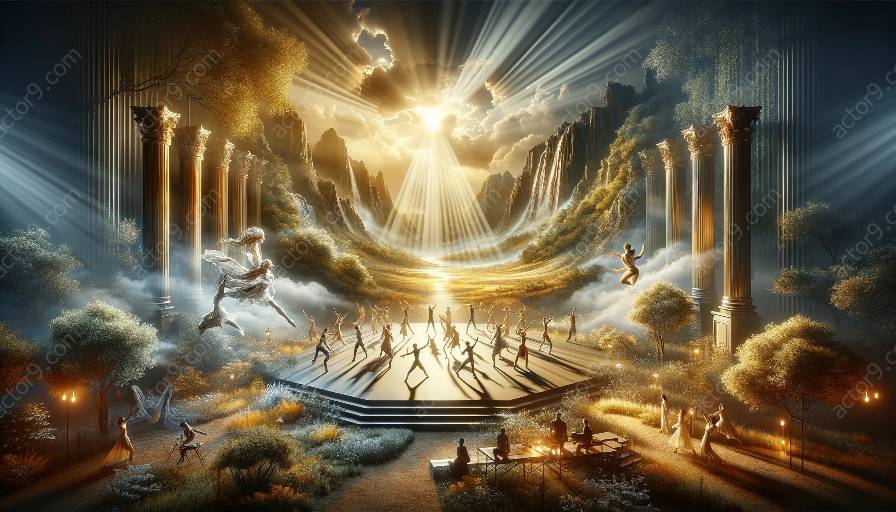Lighting and set design play a crucial role in enhancing the immersive and transformative experience of physical theatre. This topic cluster explores the intricate relationship between lighting, set design, and the overall impact on physical theatre performances. It delves into the creative process behind utilizing lighting and set design to convey emotions, narratives, and atmospheres in physical theatre.
The Role of Lighting in Physical Theatre
Lighting in physical theatre serves as a dynamic tool that not only illuminates the stage but also shapes the perception of space and time. It has the power to create visually captivating scenes, manipulate the audience's focus, and evoke emotional responses. In physical theatre, lighting is often used to emphasize movement, highlight symbolism, and establish a connection between performers and the audience.
Impact on Set Design
The relationship between lighting and set design is symbiotic, as both elements collaborate to construct the overall aesthetic and atmosphere of a physical theatre production. Through careful integration, lighting can define and transform the physical space, accentuating the set design and adding depth to the storytelling. The interplay between lighting and set design influences the mood, tone, and visual impact of the performance, contributing to the audience's engagement and perception.
Understanding Physical Theatre
Physical theatre is a genre that transcends traditional forms of storytelling by integrating movement, gesture, and physical expression as primary means of communication. It emphasizes non-verbal communication, often employing symbolic imagery and abstract narrative structures. Physical theatre aims to evoke visceral and sensory experiences, blurring the boundaries between the performer and the audience, and encouraging active interpretation and engagement.
The Creative Process
The creative process of integrating lighting and set design in physical theatre involves meticulous planning and collaboration. Lighting designers work closely with directors, choreographers, and set designers to craft a visual language that aligns with the narrative and emotional intent of the performance. Through experimentation and innovation, they seek to elevate the audience's experience by orchestrating the interplay of light and space to evoke transformative and immersive environments.
Enhancing Visual Storytelling
Lighting and set design in physical theatre serve as fundamental elements in enhancing visual storytelling. They contribute to the creation of symbolic landscapes, evoke moods, and reflect the emotional dynamics of the narrative. By harnessing the potential of light and space, physical theatre productions can transcend the constraints of verbal dialogue and elicit profound emotional responses through a multi-sensory theatrical experience.
The Merging of Artistic Disciplines
Physical theatre exemplifies the fusion of various artistic disciplines, including dance, acting, visual arts, and technical craftsmanship. The integration of lighting and set design further amplifies this interdisciplinary approach, allowing for the convergence of visual, spatial, and performative elements. The synergy between these artistic components creates a holistic and immersive performance environment, blurring the boundaries between the physical and emotional realms.




































